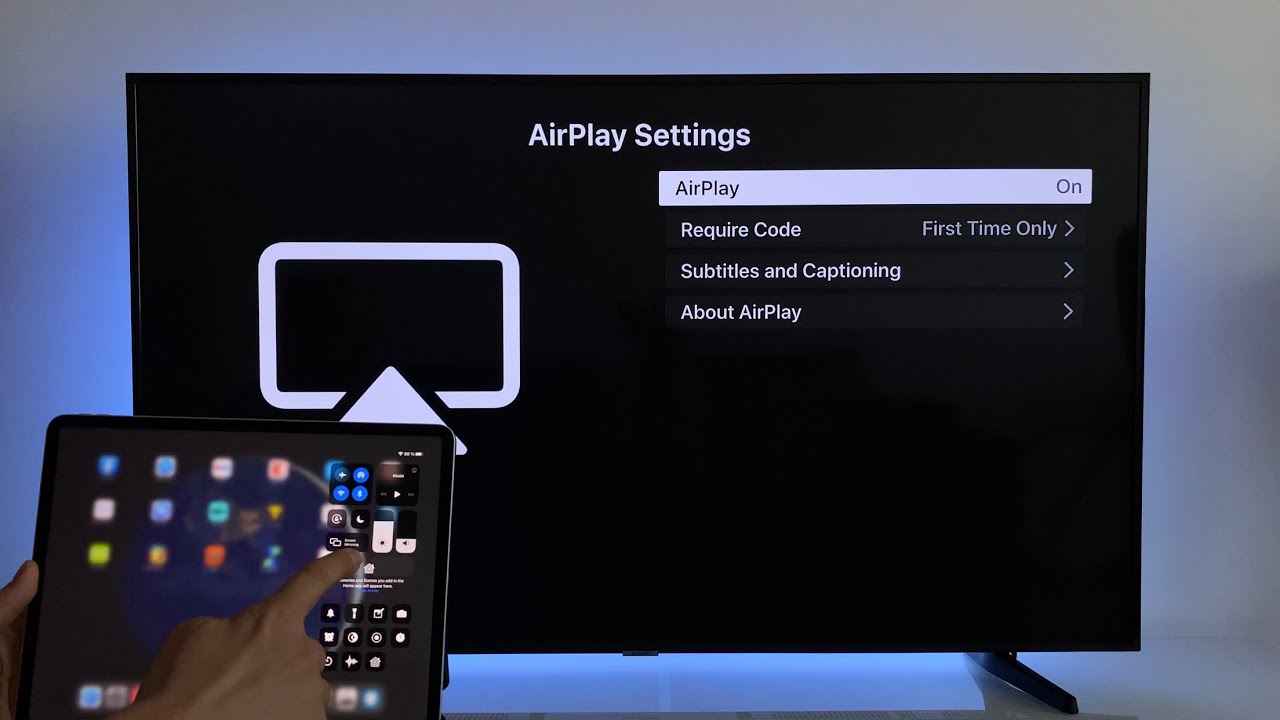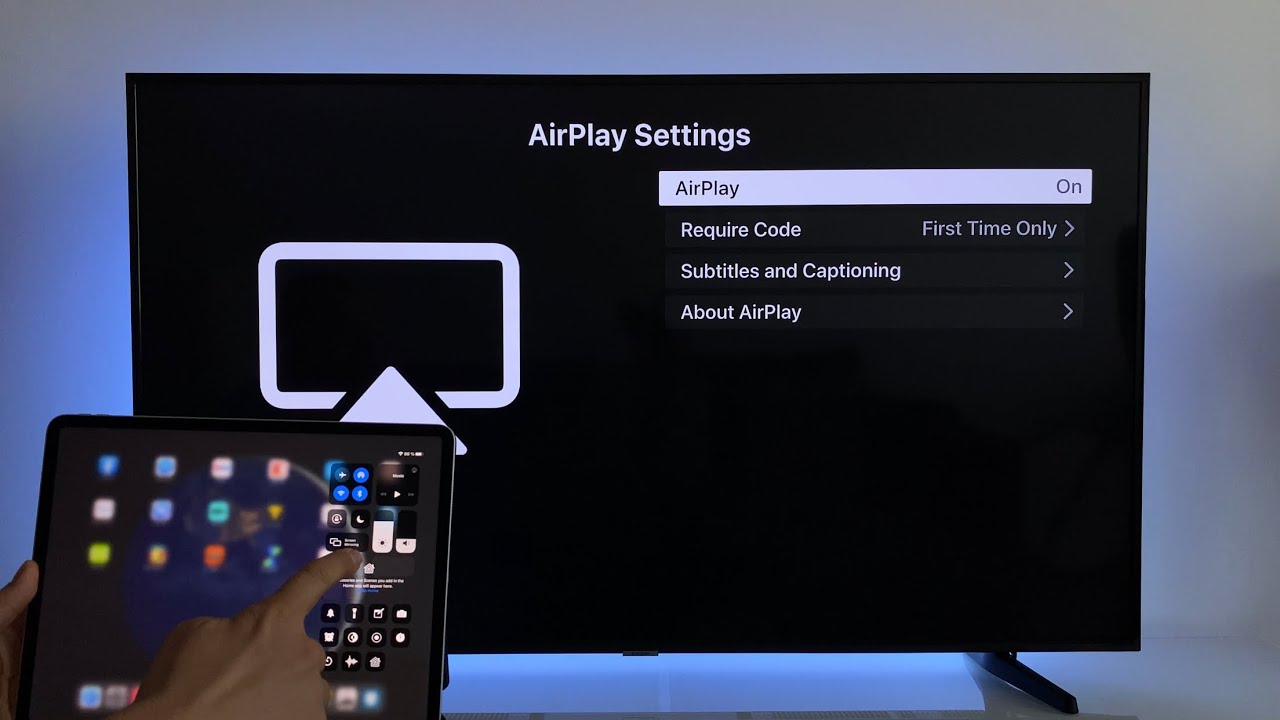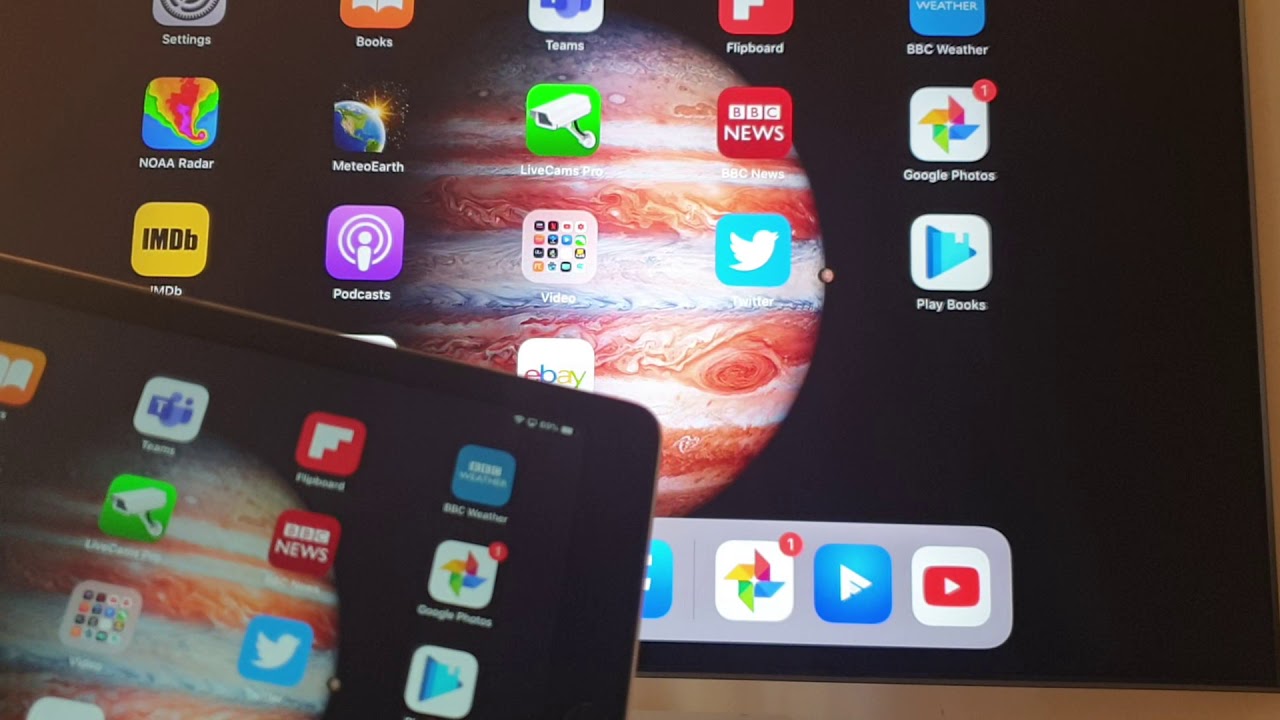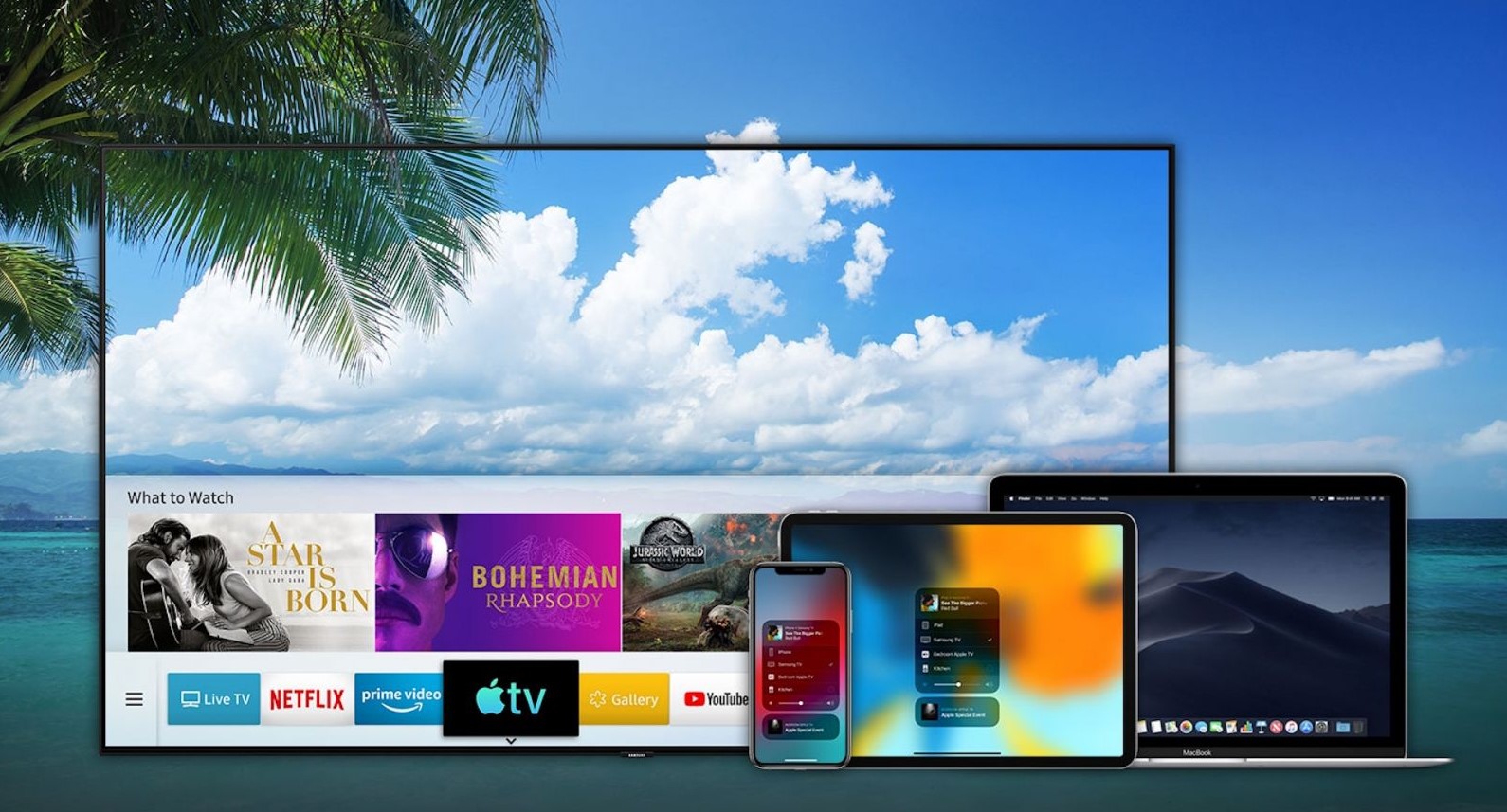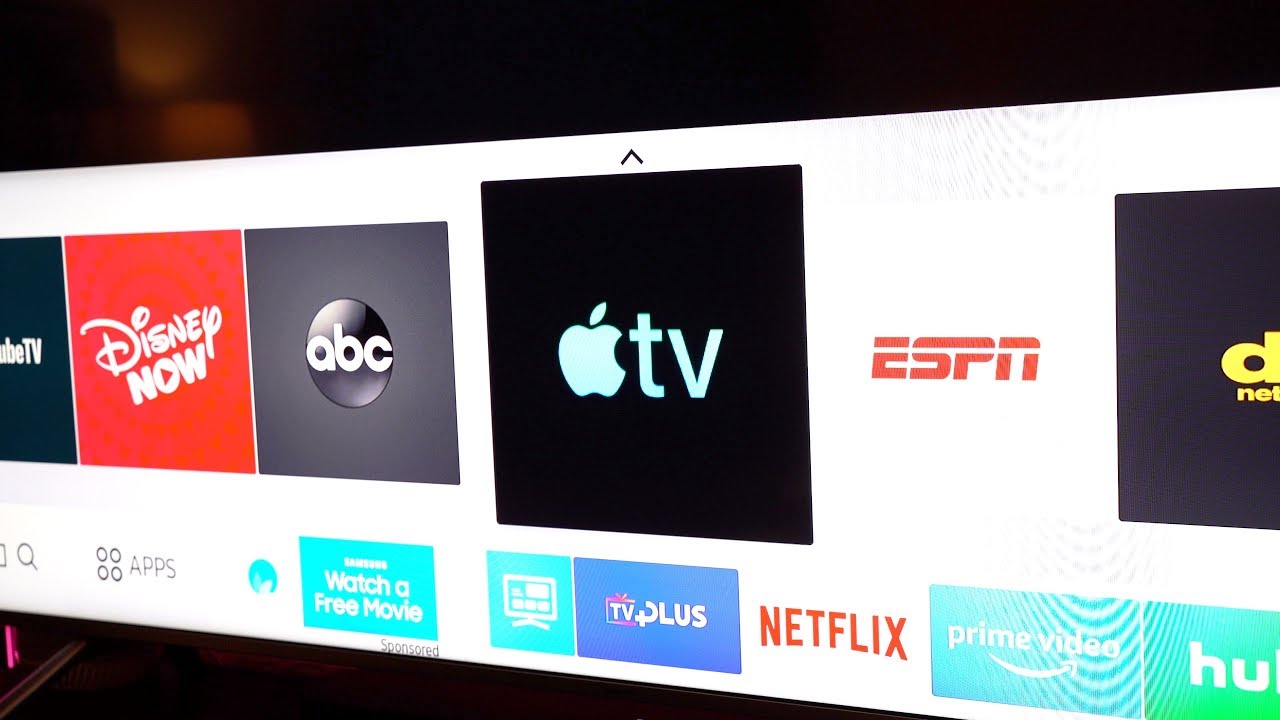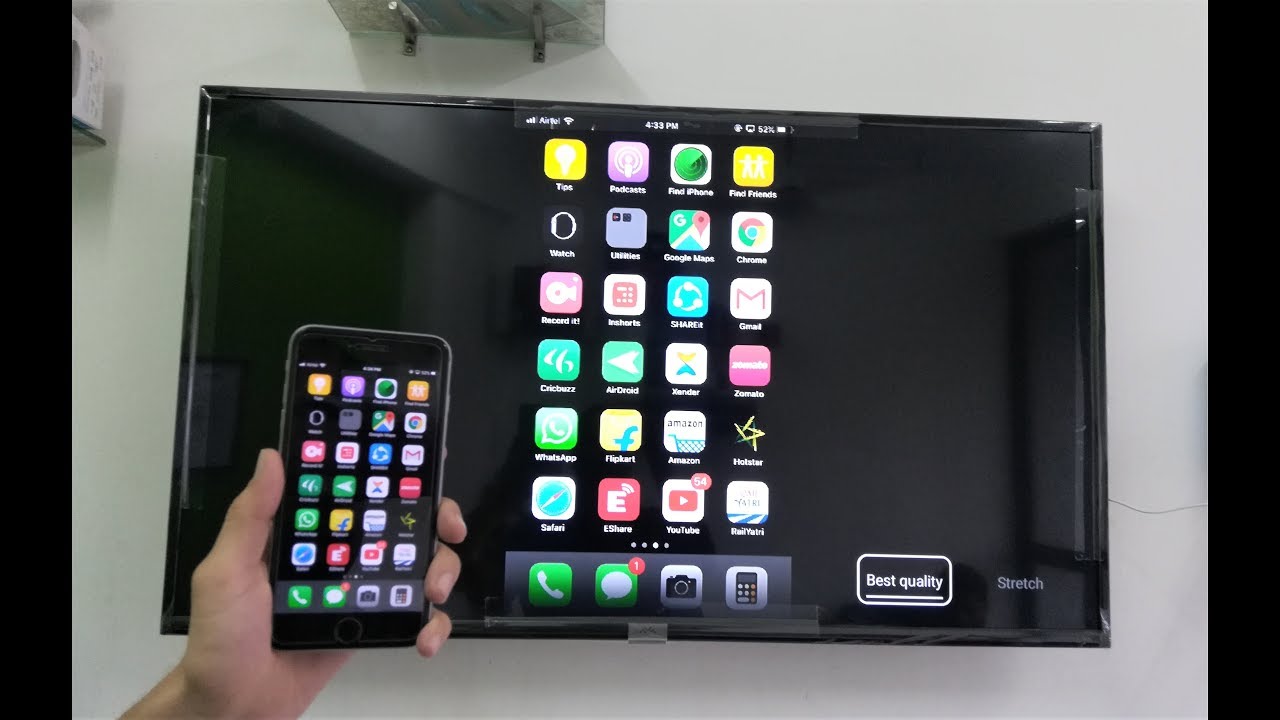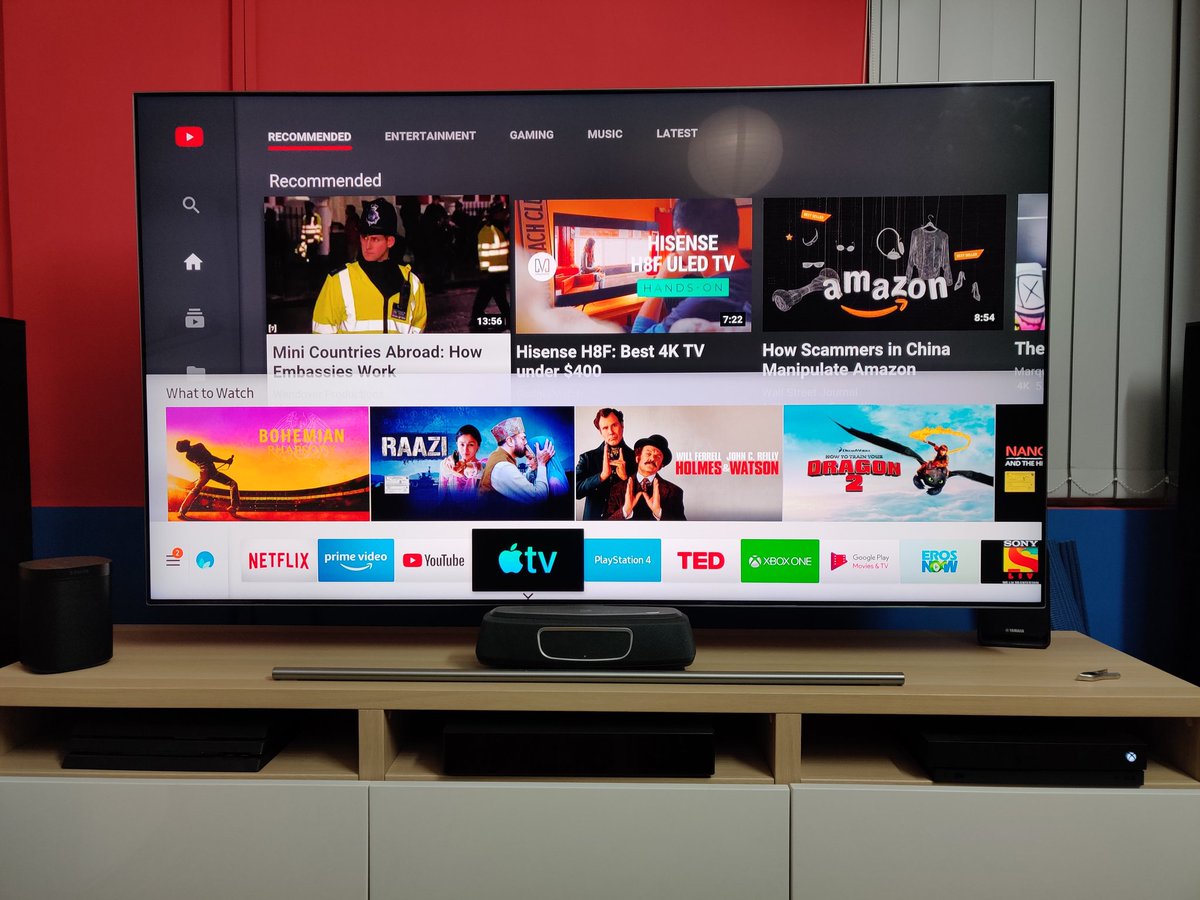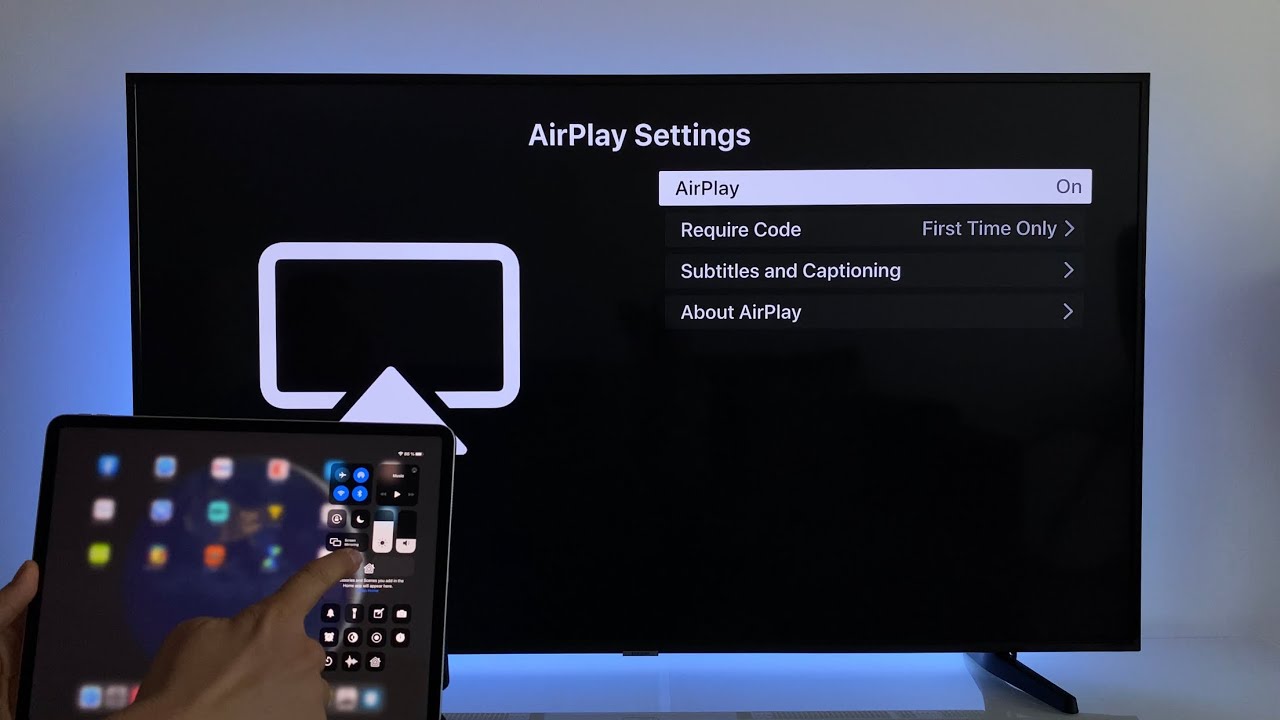Introduction
Welcome to our guide on how to connect AirPlay to your Samsung Smart TV. Whether you want to stream music, videos, or mirror your device’s screen to a larger display, AirPlay allows you to do all that and more. While AirPlay is an Apple technology initially designed to work seamlessly with Apple devices, Samsung has made it possible to connect AirPlay to their Smart TVs, giving users the flexibility to enjoy content from various sources.
If you have a Samsung Smart TV and you own an Apple device like an iPhone, iPad, or Mac, connecting AirPlay is a straightforward process. It allows you to wirelessly stream your favorite movies, shows, music, and even games with ease. Not only can you enjoy your content on a bigger screen, but you can also take advantage of the advanced features and capabilities of your Samsung Smart TV.
In this guide, we will provide you with step-by-step instructions on how to connect AirPlay to your Samsung Smart TV successfully. We will walk you through the process and offer troubleshooting tips to help you overcome any obstacles you might encounter along the way. So, let’s get started and unlock the full potential of your Samsung Smart TV with AirPlay!
Step 1: Check for AirPlay Compatibility
The first step in connecting AirPlay to your Samsung Smart TV is to ensure that your TV is compatible with AirPlay. Not all Samsung Smart TVs support AirPlay, so it is essential to verify compatibility before proceeding.
To check if your Samsung Smart TV supports AirPlay, you can follow these steps:
- Power on your Samsung Smart TV and grab your TV remote.
- Press the “Menu” button on your remote to access the TV’s menu.
- Navigate to the “Network” or “Settings” tab using the arrow keys on your remote.
- Look for a section labeled “Screen Mirroring,” “Device Connection,” or similar.
- Within that section, check if there is an option for “AirPlay” or “Apple Devices.”
If you find the AirPlay option in the TV’s settings, congratulations! Your Samsung Smart TV is compatible with AirPlay, and you can proceed with the next steps. However, if you don’t see the AirPlay option, it means that your TV may not support AirPlay, and you won’t be able to connect your Apple device wirelessly.
If your TV is not AirPlay compatible, don’t worry! There are still other ways to connect your Apple device to your Samsung TV, such as using an HDMI cable or a third-party streaming device. These alternatives will allow you to enjoy your content on the big screen, albeit with a wired connection.
Once you have confirmed that your Samsung Smart TV supports AirPlay, you can move on to the next step in the process. In the following sections, we will guide you through the necessary steps to set up AirPlay on your TV and connect your Apple device wirelessly. So, let’s continue to the next step!
Step 2: Update Your TV’s Firmware
Before connecting AirPlay to your Samsung Smart TV, it is important to ensure that your TV’s firmware is up to date. Firmware updates often include bug fixes, performance improvements, and new features, and they can play a crucial role in ensuring the smooth functioning of AirPlay.
To update your Samsung Smart TV’s firmware, follow these steps:
- Turn on your Samsung Smart TV and navigate to the TV’s main menu using your remote control.
- Scroll through the menu options and find the “Support” or “Settings” section.
- In the “Support” or “Settings” section, look for an option called “Software Update,” “Firmware Update,” or something similar.
- Select the “Software Update” option and choose the “Update Now” or “Check for Updates” option.
- Wait for your Samsung Smart TV to search for available firmware updates.
- If a new firmware update is available, follow the on-screen prompts to download and install it.
- Once the firmware update is complete, restart your TV.
Updating your TV’s firmware may take several minutes, so be patient and avoid interrupting the process. It is recommended to have a stable internet connection during the firmware update to ensure a smooth and successful installation.
Keep in mind that the steps to update your TV’s firmware may vary slightly depending on the model and interface of your Samsung Smart TV. If you encounter any difficulties or cannot find the firmware update option, refer to the user manual or visit the Samsung support website for detailed instructions specific to your TV model.
Once you have successfully updated your TV’s firmware, you are ready to proceed to the next step and connect AirPlay to your Samsung Smart TV. In the following sections, we will guide you through the remaining steps to establish a seamless connection between your Apple device and your TV. So, let’s move on to the next step!
Step 3: Connect Your TV to the Same Network as the AirPlay Device
For AirPlay to work properly, it is crucial that both your Samsung Smart TV and your AirPlay device are connected to the same network. This allows them to communicate with each other and establishes a stable connection for seamless streaming.
To connect your TV and AirPlay device to the same network, you can follow these steps:
- Make sure your Samsung Smart TV is turned on and navigate to the TV’s main menu using your remote control.
- Locate the “Network” or “Settings” section within the menu options and select it.
- Within the “Network” or “Settings” section, choose the option to connect to a Wi-Fi network.
- Select your home Wi-Fi network from the available list of networks.
- If your network is password-protected, enter the correct Wi-Fi password using the remote control or an on-screen keyboard.
- Wait for your Samsung Smart TV to establish a connection with the Wi-Fi network.
Similarly, ensure that your AirPlay device, such as your iPhone, iPad, or Mac, is also connected to the same Wi-Fi network. This can usually be done through the device’s settings menu, specifically in the “Wi-Fi” or “Network” section. If you are unsure how to connect your device to a Wi-Fi network, refer to the device’s user manual or the manufacturer’s support website for detailed instructions.
Once both your Samsung Smart TV and your AirPlay device are connected to the same network, you have completed this step successfully. In the next section, we will guide you through the process of enabling AirPlay on your Samsung Smart TV. So, let’s move on to the next step!
Step 4: Enable AirPlay on Your Samsung Smart TV
Now that your Samsung Smart TV is connected to the same network as your AirPlay device, it’s time to enable AirPlay on your TV. Enabling AirPlay allows your TV to receive audio and video streams wirelessly from your Apple device.
To enable AirPlay on your Samsung Smart TV, you can follow these steps:
- Turn on your Samsung Smart TV and ensure that it is connected to the network.
- Using your TV’s remote control, navigate to the main menu and find the “Settings” or “Network” section.
- Within the “Settings” or “Network” section, look for an option labeled “AirPlay” or “AirPlay Settings.”
- Select the “AirPlay” option and make sure it is set to “On” or “Enabled.”
Enabling AirPlay may require you to agree to certain terms and conditions, so be sure to read and accept them if prompted. Once AirPlay is enabled on your Samsung Smart TV, it will be ready to receive audio and video streams from your Apple device.
Note that the steps to enable AirPlay on your Samsung Smart TV may vary slightly depending on the model and software version of your TV. If you encounter any difficulties or cannot find the AirPlay settings, refer to the user manual or visit the Samsung support website for specific instructions related to your TV model.
With AirPlay now enabled on your Samsung Smart TV, you are one step closer to enjoying seamless streaming from your Apple device. In the next section, we will guide you through the process of connecting your AirPlay device to your Samsung Smart TV. So, let’s move on to the next step!
Step 5: Connect Your AirPlay Device to Your Samsung Smart TV
With AirPlay enabled on your Samsung Smart TV, it’s time to connect your AirPlay device, such as your iPhone, iPad, or Mac, to your TV. This will establish the link for streaming audio and video content wirelessly from your device to the TV.
To connect your AirPlay device to your Samsung Smart TV, follow these steps:
- Ensure that your AirPlay device is connected to the same network as your Samsung Smart TV.
- Open the app or content on your AirPlay device that you want to stream to your TV.
- Look for the AirPlay icon, which resembles a rectangle with a triangle at the bottom, on the app or media player’s control panel. Tap or click on this icon.
- A list of available AirPlay devices will appear on your AirPlay device’s screen. Look for your Samsung Smart TV’s name on the list and select it.
- If prompted, enter the AirPlay passcode displayed on your TV screen on your AirPlay device to establish the connection.
- Once the connection is established, your AirPlay device’s screen or audio will be mirrored on your Samsung Smart TV, allowing you to enjoy your content on a larger screen with enhanced audio.
It is important to note that specific apps or media players may have slightly different steps for streaming via AirPlay. In some cases, you may need to access the AirPlay settings within the app or media player before you can connect to your Samsung Smart TV.
In addition, some content providers may have restrictions on streaming their content via AirPlay. If you encounter any difficulties or restrictions while using AirPlay with a particular app or service, refer to the app’s documentation or contact the content provider for further assistance.
Now that you have successfully connected your AirPlay device to your Samsung Smart TV, you can start streaming your favorite content with ease. In the next step, we will explore how to stream content wirelessly using AirPlay. So, let’s move on to the next step!
Step 6: Stream Content to Your TV Using AirPlay
Now that your AirPlay device is connected to your Samsung Smart TV, you can start streaming your favorite content wirelessly. Whether it’s streaming a movie, playing music, or sharing a slideshow, AirPlay allows you to enjoy a wide range of content on your TV with just a few simple steps.
To stream content to your TV using AirPlay, follow these steps:
- Ensure that your AirPlay device and your Samsung Smart TV are connected to the same network.
- Open the app or content on your AirPlay device that you want to stream to your TV.
- Look for the AirPlay icon on the app or media player’s control panel. Tap or click on this icon.
- Select your Samsung Smart TV’s name from the list of available AirPlay devices.
- Your AirPlay device’s screen or audio will be mirrored on your TV, allowing you to enjoy the content on a larger screen with enhanced audio.
- Control playback and volume using your AirPlay device or the TV’s remote control.
During playback, you can use your AirPlay device as a remote control to pause, play, skip, or adjust the volume of the content on your Samsung Smart TV. This gives you the flexibility to control the viewing experience from the comfort of your device.
It is worth noting that while streaming content via AirPlay, you can still use your AirPlay device independently for other tasks without interrupting the streaming. This allows you to multitask or use your device for additional functions while enjoying content on your TV.
Remember to keep your AirPlay device within a reasonable range of your TV for a stable and uninterrupted streaming experience.
Now that you know how to stream content to your TV using AirPlay, you can start enjoying your favorite movies, shows, music, and more on the big screen. In the next step, we will address some common troubleshooting issues you may encounter during the AirPlay setup process. So, let’s move on to the next step!
Step 7: Troubleshooting Common Issues
While connecting AirPlay to your Samsung Smart TV is generally a smooth process, you may encounter some common issues along the way. In this step, we will address a few troubleshooting tips to help you overcome these issues and ensure a seamless AirPlay experience.
No AirPlay Option: If you cannot find the AirPlay option in your Samsung Smart TV’s settings, double-check that your TV model is compatible with AirPlay. If it is not, consider alternative methods such as using an HDMI cable or a third-party streaming device to connect your Apple device to your TV.
Connection Issues: Ensure that both your Samsung Smart TV and AirPlay device are connected to the same Wi-Fi network. Restarting your TV, device, and router can also help resolve network-related issues. Additionally, check for any software updates for both your TV and AirPlay device, as outdated software can cause compatibility issues.
Weak or Intermittent Signal: If you’re experiencing a weak or intermittent signal while using AirPlay, try moving your AirPlay device and TV closer to the Wi-Fi router to improve the connection. You can also consider using a Wi-Fi extender or Ethernet cable for a more stable connection.
Audio/Video Sync Issues: If you notice a delay between the audio and video while using AirPlay, check if there are any audio delay options available in your TV’s settings. Adjusting the audio delay can help sync the audio and video playback.
Incompatible Content: Certain apps or media players may have restrictions that prevent them from being streamed via AirPlay. If you are unable to stream content from a specific app, try using a different app or check if there are any updates available for the problematic app.
Restarting Devices: If you encounter any persistent issues, try restarting both your Samsung Smart TV and AirPlay device. Powering off and on these devices can often resolve temporary glitches and restore normal functionality.
If you continue to experience issues with AirPlay connectivity or functionality, consider consulting the official support documentation for your Samsung Smart TV or contacting the manufacturer’s customer support for further assistance.
By troubleshooting common issues, you can overcome any obstacles and enjoy a smooth and seamless AirPlay experience on your Samsung Smart TV. With your content streaming effortlessly, you’re now ready to sit back, relax, and enjoy your favorite movies, shows, music, and more on the big screen!
Conclusion
Congratulations! You have successfully learned how to connect AirPlay to your Samsung Smart TV. By following the step-by-step instructions in this guide, you can now enjoy wirelessly streaming your favorite content from your Apple devices to your Samsung Smart TV with ease.
We started by checking for AirPlay compatibility on your Samsung Smart TV and updating its firmware to ensure optimal performance. Then, we walked you through the process of connecting your TV to the same network as your AirPlay device and enabling AirPlay on your Samsung Smart TV.
Once AirPlay was enabled, we guided you in connecting your AirPlay device to your Samsung Smart TV. We explored how to stream content wirelessly using AirPlay, allowing you to enjoy movies, shows, music, and more on the larger screen of your TV.
Lastly, we addressed common troubleshooting issues that might arise during the setup process. By following the troubleshooting tips provided, you can overcome any challenges and ensure a seamless AirPlay experience.
We hope this guide has been helpful in enhancing your entertainment setup and optimizing your Samsung Smart TV’s capabilities. With AirPlay, you can unlock a world of streaming possibilities, bringing your digital media to life on the big screen.
Should you encounter any further difficulties or have specific questions, refer to the official support documentation for your Samsung Smart TV or reach out to the manufacturer’s customer support for personalized assistance.
Now, sit back, relax, and enjoy the convenience and versatility of AirPlay as you stream your favorite content on your Samsung Smart TV. Happy streaming!







